We'll be spending the next few weeks behind the wheel of the 2024 Genesis GV60, and we’ll need all of that time to analyze this newish all-electric pocket SUV from the Korean brand. Here's the second part of our long-term review.
See also: 2024 Genesis GV60 Long-Term Review, Part 1: Tasty Treat Wrapped in Candy Shell
This time, I'm taking you on an exploratory journey to the state of Maine. The exploration has to do with how the Genesis GV60 2024 performs, and whether this northeastern corner of America is a good place for electric vehicles.
The plan: seven days on the road in an EV. Starting point, Île-Perrot (west of Montreal); then to the beaches of Wells, followed by a stopover in Bar Harbor, not so far from New Brunswick, and then back home to visit friends in Quebec City. In all, over 2,000 km.
If I'd been driving a gasoline-powered vehicle, I wouldn't really have bothered to plan my route, because that's not my style and there's no shortage of gas stations in the U.S. To run out of gas, you have to want to.
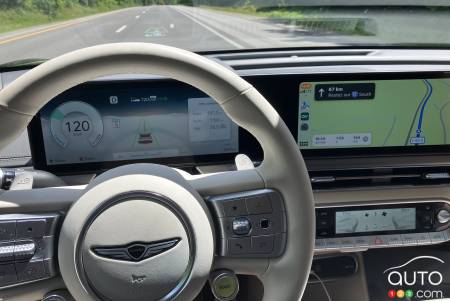
But with EVs, whatever the model, owners ask themselves at least two questions before embarking on an electric adventure:
- How many recharges will it take to get to my destination?
- Where can I do it?
The first answer is mathematical, at least on paper. For the leg to Wells, Google announces 520 km. According to Genesis, the Performance version of the GV60 has a range of 378 km (vs. 399 km for the Advance version), thanks to the 77.4 kWh lithium-ion battery linked to two electric motors, which provide all-wheel drive for both variants.
In fact, my first days with the car showed me that the manufacturer is being modest. I was getting more than 430 km out of a Level 2 (240V) charge at home. In the even, on the morning of departure, after running the usual round of pre-trip errands, the GV60 displayed 396 km (89 percent charge).
A bit of math later, I figured a single recharge along the way should be enough to reach the Wells beaches. In theory.
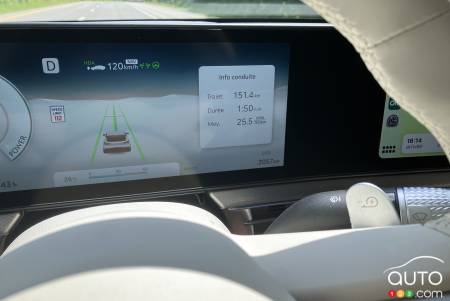
To confirm this, and thus answer the second question, there are several applications with a trip planner. I consulted the one from Circuit électrique, a division of Hydro-Québec that has already installed some 5,500 charging stations in Quebec and Ontario.
Once I'd identified my vehicle and my destination, the Circuit suggested 55 South to Magog, then the I-91. It predicted a single stop for a 19-minute charge, at an estimated cost of $15.67 at a fast charging station in the border town of Stanstead. The app estimated a total of 6 hours to reach Wells.
Fine by me. Full speed ahead!
At 10 am, the sun was out, the odometer read 1,718 km, the car smelled like new, our luggage was stacked on the fluffy carpet under the power tailgate with Tetris-like precision, and the plump 60/40 bench seat, richly dressed in white Nappa leather, had the honor of carrying our egg sandwiches.
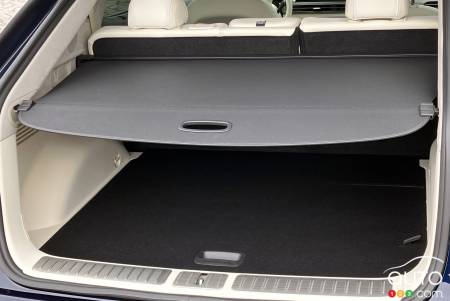
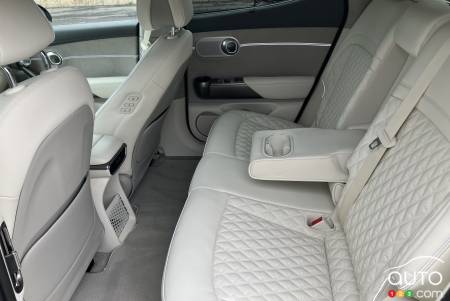
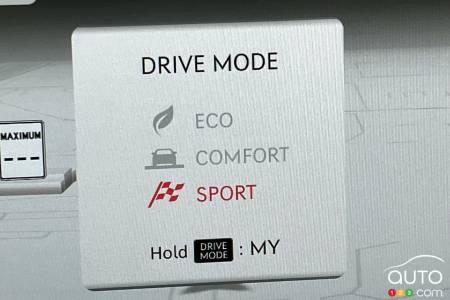
Maximizing one’s chances
Of the GV60's three drive modes (Eco, Comfort and Sport), I chose the Eco, which least taxes the battery. Just in case. (Switching to Comfort mode as a test immediately dropped the estimated range on the screen from 396 km to 385; in Sport, it dropped to 373). No point in wasting precious energy.
As a final precaution, I used the steering wheel paddles to engage the maximum level of energy regeneration. That created intense deceleration any time I let up on the accelerator occurs, enough to bring the vehicle to a halt without touching the brake. This action recharges the battery. A dial demonstrates the phenomenon with a clear graph.
Two hours later, we were safely in Stanstead. Remaining range: 122 km (33 percent). In other words, the GV60 took 274 km from the battery to cover 188 km. How’s that? Highway driving, to put it simply, not an activity that’s friendly to EVs. The city center, with its slower driving and frequent braking (regenerating) is the favourite environment of EVs and their battery packs.
In Stanstead, we confirmed the app hadn’t lied. I found myself in front of four charging stations with clearly identified kW capacities is clearly identified: 50, 100 and 180 (two of them). By the way, yes, you run the risk of them already being occupied, but the app will inform you in real time how many are free. In the worst case, you wait your turn or look for other stations.
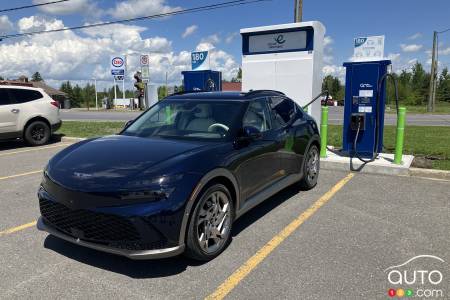
I backed the GV60 up to a 180-kW terminal (the GV60's charging port is at the rear, on the driver's side). The cable is heavy and cumbersome, so it's best to get close to it.
Two things worth knowing. First, the higher the power of the terminal, the faster and more expensive the recharge. So when is expensive too expensive? This was going to be more than using a 50-kW terminal, certainly, but still far less than a full tank of gas, that's for sure.
Second, if I can take advantage of the 180-kW terminal, it's because the Genesis GV60 lets me. Not all EVs are created equal. Even if you like the idea of selecting the most powerful terminal, your EV may not be able to accept the same flow of electricity.
To determine what your EV can handle, you need to know the power of its On Board Charger (OBC). Rest assured, if you don't know this, it's not so serious - your EV won't explode. In fact, it's always the on-board charger that tells the charging station what to do. It restricts charging. Strangely enough, EV manufacturers don't pay too much attention to this information. I can understand why, as it would lead to more technical explanations.
In the case of the GV60, it's enough to know that it has a charger that's modern and robust enough to accept fast recharges, like the one about to be delivered by the 180-kW station in Stanstead, and even ultra-fast recharges (350-kW stations are not yet common enough).
At the nearby 50-kW terminal, someone plugged their Chevrolet Bolt in. I caught them checking out the GV60 with undisguised admiration. They could have connected to the other 180-kW terminal, but the Bolt’s on-board charger couldn’t have made full use it, whilst paying the higher cost.
Opposite the terminal was an IGA grocery store, and next to it a landscaped area with picnic tables. This is no accident. Might as well install charging stations where folks can spend more dollars. It was midday, were hungry, the stars were aligned.
The recharge lasted exactly 21 minutes and 28 seconds, I used 48.08 kWh and it cost me $24.83, taxes included, all of it detailed on the receipt the Circuit app sent me right away.
It’s not recommended to charge an EV battery to 100 percent on a rapid charging station (an unnecessary precaution at home). Firstly, because it's not good for the battery's longevity and, secondly, because at 80 percent recharging slows down and thus starts to cost even more, since the billing is calculated by the second.
So when your app, the charging station or your EV's screen tells you that you're at 80 percent, stop charging. In my case, in Stanstead, I was distracted by the quality of my sandwich and let it slip to 91 percent. I now had a range of 373 km.
To be continued...






